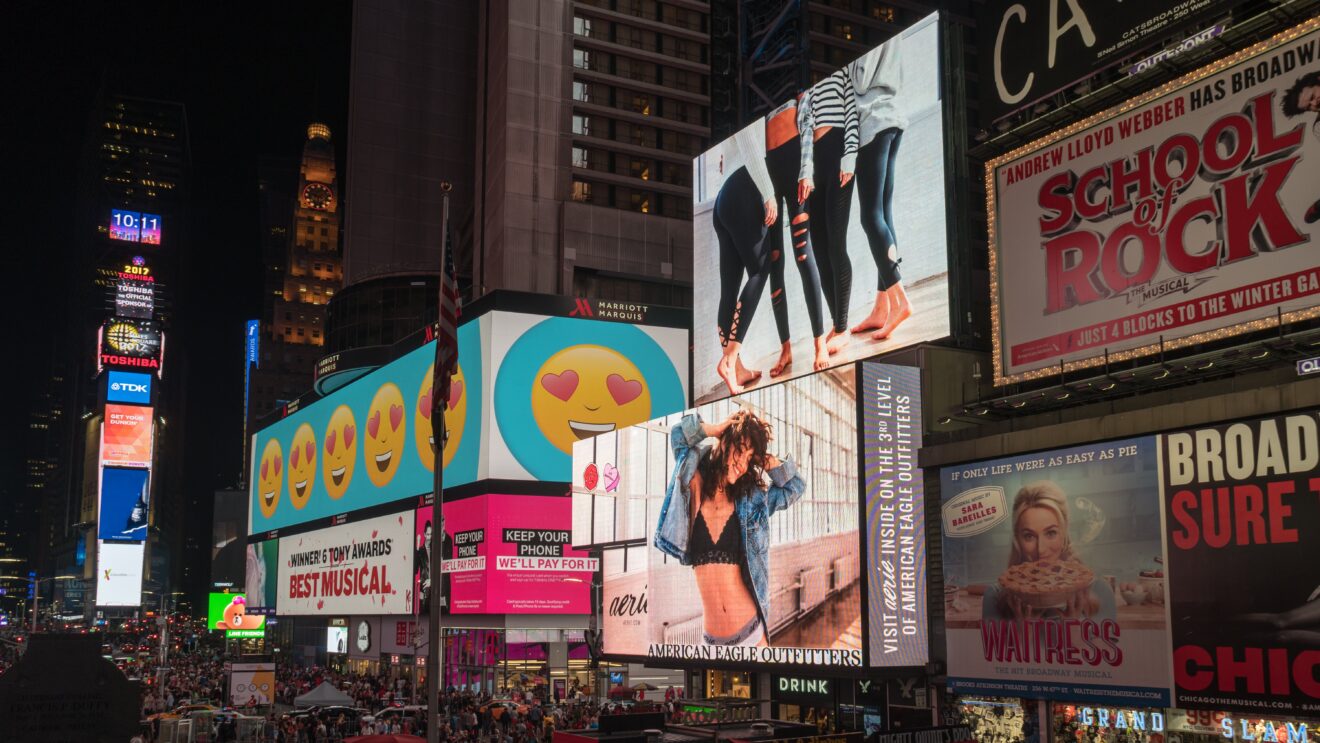Digital out-of-home advertising has expanded rapidly over the past few years, advancing from traditional billboards to dynamic digital displays that captivate passersby with vibrant, interactive content.
The growth is not just about size; it’s about sophistication. DOOH is currently marked by increased integration with cutting-edge technologies, offering advertisers new opportunities to engage with consumers in real time and real-world contexts. But what can we expect to see happening in DOOH in 2024 and beyond? Here are my thoughts.
Top predictions for DOOH in 2024
As 2024 progresses, DOOH advertising is on the verge of transformative changes, driven by technological advancements and evolving market dynamics. Predictions shaping the short-term future of DOOH include:
1. Seamless omnichannel integration
Integrating DOOH into the broader omnichannel marketing mix is set to redefine advertising strategies. By seamlessly blending with online and mobile platforms, DOOH is becoming a primary component of unified marketing. This integration enables brands to build cohesive storytelling experiences that flow smoothly across various channels. DOOH amplifies these brand messages, ensuring consistency and engagement across all consumer touchpoints and enhancing the impact and recall of campaigns.
2. Artificial intelligence
AI is revolutionizing DOOH advertising with smarter, more efficient creative production and dynamic creative optimization. By leveraging AI, advertisers can tailor content in real time, based on data-driven insights about audience behavior and preferences. For example, AI supports more personalized messaging, such as ad content based on weather conditions and time of day.
AI’s role also extends to improving data analysis and ad technology, making DOOH campaigns more targeted, responsive and effective. In the future, facial and spatial recognition might enable tailoring messages to a particular consumer or object, such as the make and model of a car. These options enhance advertisements’ relevance, optimizing resource allocation and maximizing return on investment.
3. Diversification of screens
The shift from static billboards to dynamic, interactive screens is a major broadening of the DOOH horizon. This change is enhanced by using new technologies like holograms and augmented reality, which create immersive and engaging experiences for people. Incorporating 5G connectivity will allow DOOH to receive data faster and deliver high-definition streaming. These technologies make DOOH more visually appealing while creating new ways for ads to connect with and involve audiences, making advertising more interactive and fun.
4. Sustainability
Sustainability is now a key focus in the DOOH industry, with more efforts being made to reduce its environmental impact. Advertisers and tech companies use eco-friendly methods like energy-efficient LED lighting and sustainable materials. At times, boards may be turned off between 2 a.m. and 6 a.m. due to low impression numbers. I can certainly foresee DOOH companies using solar panels in the future to help minimize energy usage. There’s also a move towards digital-only content that lessens the need for physical materials and decreases waste. These green practices show a dedication to caring for the environment and appeal to consumers who are conscious about sustainability, improving the image and attractiveness of brands.
5. Scale and precision
In today’s DOOH campaigns, it’s important to balance reaching a wide audience while still being specific in messaging. Thanks to AI and machine learning, advertisers can create custom ads for a large audience without losing the focus of targeted messages. This approach lets campaigns reach many people but still cater to individual tastes and behaviors. The outcome is more effective and engaging advertising for different types of viewers. This trend is moving DOOH towards more advanced campaigns that combine the ability to reach many while staying relevant for the greatest effect.
The future of DOOH for the rest of the 2020s
As we look towards the rest of the 2020s, the DOOH advertising sector is on the brink of major changes, fueled by new technology and shifts in the market.
1. Market growth and projections
By 2030, I expect the DOOH market to grow significantly, potentially reaching billions of dollars. This expansion will be driven by more digital displays in public spaces, better screen technology and a preference for dynamic ads over static ones. Combining DOOH with mobile and online ads also plays a big part in this growth, allowing for more detailed and trackable campaigns.
2. Technological advancements
DOOH’s future is closely tied to tech advancements. Upcoming technology like 5G, the internet of things (IoT) and advanced data analysis will make DOOH ads more effective and far-reaching. These technologies will lead to more interactive and data-focused ads, giving advertisers new ways to engage and understand their audience. This tech evolution also opens up fresh creative and efficient ways to use DOOH advertising.
3. Regional analysis
DOOH is growing differently around the world, with Asia Pacific and North America at the forefront. Asia Pacific is rapidly growing due to its fast-paced urban development and digital upgrades, while North America is pushing forward with new tech and creative ideas. These regional differences show how various areas adopt and innovate DOOH, influenced by local consumer habits, tech availability and regulations.
4. Challenges and opportunities
The DOOH industry faces challenges like changing regulations, privacy issues and the need for consistent measurement methods. However, these challenges also offer opportunities for growth and to implement new ideas. Advertisers and technology companies can lead the way in solving problems, like creating privacy-friendly ways to gather data and standardizing how DOOH effectiveness is measured. Tackling the challenges is crucial for advancing the industry and fully realizing DOOH’s potential.
A pivotal point in DOOH’s evolution
As we navigate through the rest of the 2020s, digital out-of-home advertising stands at a pivotal point, blending innovative technology with creative marketing strategies. Its evolution promises to redefine public spaces and offer advertisers novel ways to engage audiences, ringing in a new era in advertising.
If you liked this article, sign up for SmartBrief’s free email newsletter on out-of-home marketing. It’s among SmartBrief’s more than 250 industry-focused newsletters.
Opinions expressed by SmartBrief contributors are their own.
